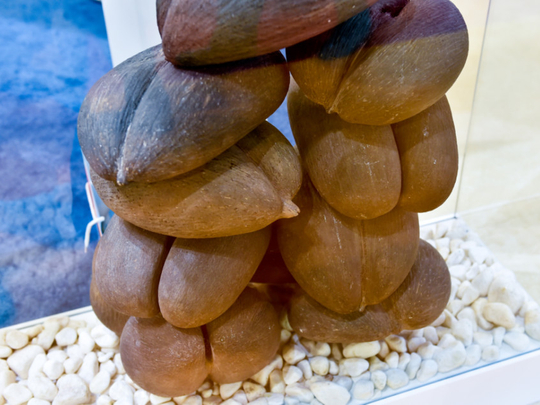
DUBAI If you thought nuts only made up a mouthful of bits and bobs, then you possibly haven’t seen or heard of the lodoicea.
Popularly known as the love nut or the sea coconut in the Seychelles where it is found in just two of its islands – Praslin and Curieuse, it is the world’s largest nut or to botanically put it, the fruit with the biggest seed in the plant kingdom (A nut is a fruit composed of a hard shell and seed, generally edible).
On display at the 2016 Arabian Travel Market on until Thursday at the Dubai World Trade Centre, it’s not surprising why a handful of these big brown nuts - carefully displayed inside a glass cabinet at the country’s official stall in Shaikh Saeed Hall 2 – has been inviting more than a few curious glances.
“It is endemic to Seychelles, so there’s a reason why many people may not even be aware of it,” says Maria Morel, a senior marketing executive at the Seychelles Tourism Board that shipped the nuts specially to promote the ‘uniqueness’ of the archipelago off the East African coast on the Indian Ocean in Dubai.
“It’s almost like national property, so its sale is regulated. Special permits are needed for people to take it out of the country,” adds Morel who says a love nut in her country is sold for anywhere between 5000 Seychelles to 8000 rupees (Dh1,362 to Dh2,270).
“Our country comprises a group of beautiful islands with lots of natural preserves and the lodoicea is almost like a symbol of all that. It’s a nut but when you break it open, what you get is a fascinating jelly like fruit,” she adds.
Also called the Seychelles Nut because it is not found anywhere outside the country, the fruit takes six to eight years to mature, growing up to 40-50 cms in diameter and often weighing between 15 and 30 kilos.











